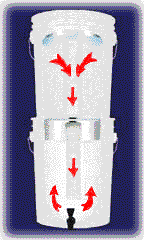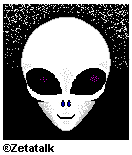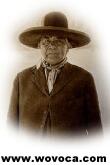|
||||||||||||||||||
Press CTRL+D to bookmark this page! |
||||||||||||||||||
 |
||||||||||||||||||
| Click here for
EarthMotherCrying Wallpaper |
||||||||||||||||||
Hidden History of Sequoyah |
||||||||||||||||||
|
||||||||||||||||||
|
|
||||||||||||||||||
|
||||||||||||||||||
|
||||||||||||||||||
Excerpts from Tell Them They Lie found at http://www.sunflower.com/~dewatson/dma-ls05.htmat
Below are excerpts from a book by Cherokees about their ancestor and the Cherokee syllabary. The transfer lost some quotes and apostrophes, and I didn't catch all of them. I guess I just wanted to show everyone that I wasn't misrepresenting the author, and to give those interested in the issue the gist of the "minority opinion." I personally think it opens up an amazing "new" view into Cherokee history. Tell Them They Lie: The Sequoyah Myth by Traveller Bird. Los Angeles CA: Westernlore Publishers, 1971.
Acknowledgments The preparation of this biography on my direct blood ancestor, George Guess, alias Sequoyah, was a tremendous undertaking and has not been accomplished alone. In the winter of 1961, we the seventeen direct heirs met in a cabin on the North Carolina Cherokee reservation to plan and work on this book. Two of us live in the United States, the other fifteen live in Mexico. We speak, read and write our native language in three of the six dialects. This book is an attempt by the direct heirs of George Guess to correct historical guesswork. Who George Guess was and what he did for his people will be chronicled in this book, contradictory to all literature notwithstanding. All unpublished documents quoted in this book are in the collection of the author and the other sixteen heirs apparent of George Guess. In translating Cherokee documents, we have employed the modern Cherokee system of orthography to equate with the English language. An interlinear translation and spelling in English does not equate with that in the Cherokee syllabary. Most of the old manner of speaking had to be sacrificed in order to achieve modern day readability. ...
For 143 years this painting is reputed to be of Sequoyah, or George Guess. The man is Thomas Maw. There was never a painting, nor photograph, of George Guess, nor George Gist, known in history as Sequoyah. --The Author.
Introduction For a quarter of a century -- from the year 1821 until 1845 -- Sequoyah's name appeared intermittently in the missionary tracts, local and national newspapers throughout the United States and Europe. Invention of Letters By A Cherokee Indian. It appears than an Indian, of the name of See-quah-yah is the inventor under such disadvantageous circumstances as render him, in our humble opinion, one of the most extraordinary men that the world has produced. The Universities and other learned societies in Europe would be only doing common justice to See-quah-yah in granting to him the highest literary distinctions ... [ftn: London Courier, reprinted in the New York American, Vol IX, No 970, June 8, 1930.] His life had, in the press, the beat of a spectacular serial story. Over and over again, the discovery of the Cherokee syllabary by the American press and public in 1825 proclaimed Sequoyah a Cadmus and the bastard son of a white man who traded with the Cherokees east of the Mississippi River during the middle of the eighteenth century. Like sainthood stories of that period, nothing about Sequoyah's life was known to the press and to the American public, except for the made up information that the missionaries and the progressive leaders desired to become known. The missionaries wrote an episode in Cherokee history, and they wrote it to fit their purpose. They twisted the facts to fit the picture desired. They tagged their fake name Sequoyah -- a Taliwa tribal name, and made George Guess the helpful hero to their civilization movement, knowing that this Cherokee could do nothing about it. The formal English name of George Guess is correct. Sequoyah was a fighting warrior-scribe of twenty-six on that night in 1792 when the great war chief of his peoples faction was shot down. He was known to all his tribesmenby his given name Sogwili, meaning Horse in the Cherokee language. The word Sequoyah is meaningless in Cherokeean. But by the end of those crushing wars in 1794 -- the Cherokee fall, and on into the first quarter of the nineteenth century, his fake name of Sequoyah was to become a symbol of intellectual achievement in an American Indian society outside the Cherokee Nation. Inside the nation, east of the Mississippi River, Sequoyahs name for two decades was a mark of resistance to the progressive New Order movement of mixed-blood leaders, and friendly Cherokee traitors toward Anglo-Christian civilization. Indian Sequoyah was unable to challenge the press, missionaries, and the Cherokee leaders two-faced fallacy, since non-conforming Cherokee were considered savages. In October 1816, Sequoyah was caught and tried before a general council of mixed-blood judges, Cherokee police, and warrior chiefs in the New Order of the Cherokee Nation. He was charged with witchcraft and encouraging his mountain clansmen in Tennessee and North Carolina to emigrate to the West beyond the limits of the United States -- to his settlement on the Brazos River, in what is today Texas. The Cherokee General Council convicted Sequoyah for witchcraft. The conviction was an excuse by the ruling leaders to set an example before the Cherokee people of the power of the New Order adopted from the white mans Christian civilization program. Sequoyah was branded on the forehead and back. So was his wife. His fingers on both hands wer cut off between the first and second joints, leaving the stubs and his thumbs. His ears were cropped off, the mark of a traitor to the Cherokee Nation in the southeast for anyone desiring, and encouraging removal of the people to the West. In the fall of 1816, he and his wife barely escaped from their tormentors with their lives. The syllabary had publicly been used since 1795 as a weapon to block the great experiment forced upon the Cherokees by the United States government in order to control and civilize the Indians by the Anglo-American social standards. As early as 1806, the leaders and the missionaries had seen the Cherokee marks (symbols) written on homes, barns, fences, trees, leaves, rocks, and dirt roadways by those trusted conservatives living in the mountains of Tennessee, Georgia, and North Carolina. They had seen the Cherokees and their children reading the marks.But the superstitious whites and mixed-bloods believed them to be the work of Indian children or sorcerers. Perhaps most important was the United States governments knowledge of the syllabary since 1791. The nation split wide open in 1806, and the conservative Cherokees resisted the teachings of the missionaries and their fault findings. The conservative leaders of the nations faction signed treaties with the United States; ceded lands in the old nation east of the Mississippi for new lands west of the Mississippi, newly acquired by the United States in its purchase of the Louisiana Territory. In the fall of 1816, a letter written in the syllabary by Sequoyah to his half-blood brother, Whitepath, was accidentally intercepted by the Cherokee police or so-called Light-Horse Guard of the nation. Whitepath was forced to read the contents of the corn shuck letters to the leaders and missionaries, and to take them and the Cherokee police to the North Carolina mountains where Sequoyah was staying with his in-laws and his new wife. It was in the North Carolina mountains, at the village of Sequoyahs father-in-law, Tsatasi Ughvi, that the Cherokee leaders first tried Sequoyah , and learned that many thousands of Cherokees wrote and read in their native language. The leaders then began to believe there was such a mode of Cherokee mark writing and reading. But the idea of a Cherokee native method of writing and reading was ejected and founght by the missionaries living in the nation, who felt that anything of Indian origin was repugnant and savage. These white missionaries came to the Cherokee Nation to stamp out Indian heritage and culture, and they meant to do exactly that. The white missionaries, thinking they were a superior race, could not afford to let mere Indian pagans outwit them and the United States Governments great civilization program. Therefore, until 1821, the Cherokee syllabary was concealed from the American public, even though a majority of the fullblood conservatives were writing and reading their own native language. These rejected the teachings of the missionaries to become like the whites, for the language and ways of the foreigners was the destroyer of their inheritance and tribal life. In 1816, a tangled web began in the life of George Guess, alias Sequoyah, when he was caught, tried, and convicted; a web that would indirectly cause the death, slavery, exile and a Cherokee guerrilla war in the Southeastern, as well as the Western Cherokee Nation of thousands of Cherokees during the first and second quarter of the nineteenth century. Sequoyah was a fullblood Indian of the Cherokee, Taliwa and Tasgigi Tribes who desired to remain Indian, and to hold fast to his tribal heritage and cultural teachings. Nearly six feet tall, he was a rugged man, with a keen knowledge and memory. In 1797, Sequoyah led a group of emigrant Cherokees beyond the sovereignty of the United States -- lands beyond the Red River ruled by Spain. This decision to leave the homelands of his ancestors was to protect his nonconforming people from destruction as a tribal people. He refused to make peace and acknowledge the United States Governments forced great experimental civilization program upon himself, and his people near the end of the eighteenth century, when the governments armies finally crushed the resisting Cherokee fighting forces. The armies of the new guardian government had so reduced the Cherokee Nation to a state of poverty and death of its fighting leaders that it was shattered. They gloated over the helpless conditions of the Cherokees. Stripping the Indians of everything, the government sought to take away their dignity, self-respect, and further land cessions by regulated credit trade -- dependency. White man's ethics were ramed down their throats in the name of conformity, and to destroy tribal life-ways. Truly, Sequoyah was different from his reticent tribesmen. He was not a good little Indian who smiled, nodded, and remained silent. He had the guts to stand and face the conquering foreigners who were taking his peoples life and their homelands. He was cruel to those who threatened new changes for himself and his mountain conservatives. But most of all, he hated the fullbloods -- white Indians who turned their backs on their own people, heritage, and followed the Anglo civilization. His devotion to his wives, children, clansmen and tribe was deep -- a devotion that only Indians know and understand. He was a fighter, a contributor of deeds, for Indians are taught and expected to contribute to the well-being of their clan and tribe. Sequoyah gained his training, skills, and knowledge from the cradle -- from the elder ones, fighting leaders, and chosen scribes of the eighteenth century who dared not quit and give up their lands to the white invasion. These Cherokee fighters were to become known in Cherokee history as the hostiles or outlaws. They fought violently until their great leader, Dragging Canoe, and most of his assistant chiefs were killed by the white armies in 1794. Many Cherokee leaders and warriors influenced the early life of Sequoyah, but none had the molding of the boys life more than the great war chief of the Cherokee Nations faction, Dragging Canoe (Tsiyogunsi). [ftn -- The Cherokee meaning of this word is, the Otter lifts it. Commonly referred to in literature as Dragging Canoe.] Thirty-one years of Sequoyahs early life was lived in his beloved mountains of North Carolina and Tennessee. Among the documents which he left that escaped the fires of his enemies -- (and he had many) -- are those handwritten and handprinted ledger books of his eight children. These present a picture of a giften, sensitive and strong man who began life in July 1766 in a brush-covered dirt floor summer Osi [sleep house] in a Cherokee settlement in the North Carolina mountains. In 1871, two grandchildren of Sequoyahs daughter Gedi, living in the United States, sent their grandmother a copy of Harper's Magazine, dated 1870, which contained an article and the supposed picture of Sequoyah and the syllabary. These children asked their grandmother many questions about that article and picture. She wrote to them, saying: . . . Now, the people that write in the newspapers Phoenix and Advocate, and Harpers book are pretender liars. That which I say to you my grandchildren is duyughodv (right, just) about my father Sogwali and your grandfather. That picture I saw of the man they call Sogwali (Sequoyah) in Harpers book is a joke. That is not the picture of your grandfather Sogwali. That is not the way he looked. My father Sogwali had no ears, no long fingers. They cut off. That picture is a fraud. That man is Thomas Maw. Just like that paper that Thomas Maw is holding in his hand is not the right one. The writing is not right. Just like what the Rulers say in that book. Laws of the Tsalagi (Cherokee). They say my father went to Washington City, and signed a paper with the unegvs (whites). They say he went to the meetings when all the people come west. Signed his name there on their paper. They are liars. He was never in Washington City. He not go to council in June 1839. He dead. My father Sogwali not ive in Indian Territory. He live in Mexican lands with others of our people in Texas where I was born. ... He not give our people that which they have ... He teach them. Now, my father Sogwali was no more the son of a white person, than I am the daughter of a black person. No, they lie. Any fool can make a mark and say Indian did it. Not so! My father Sogwali not intend our writings be for the whites and traitors to use and learn.... The events that shaped Sequoyah's life and the action he took as he grew up, began in the first quarter of the eighteenth century. For that reason it is necessary to return to that period in this history. ****** [above through page 17; page 18 contains a copy of the original ninety-two handwritten symbols of the Cherokee syllabary.] ****** Chapter One [pages 23-25] In the fall of 1779, the Indian settlement of Redhorse [ftn:in the Cherokee language, Sogwiligigageiyi means Redhorse Place -- after the scribe of the village Redhorse, who was Sequoyah's father. The village was located on Sumac River in Rutherford County, North Carolina. Commonly referred to in literature as Soquee, Serowee, Skeequoyah, and Talohtefke.], birthplace of Sequoyah, remained unconquered. ... Under the leadership of Dragging Canoe, the Cherokee fighting faction had one ace in the hole -- an effective weapon. This weapon was the Gohwelodi [ftn: to write, one, a scribe] -- the sacred written symbols which represented parts of syllables of the Cherokee language. It could be written anywhere -- on trees, rocks, leaves and the earth. It sent messages to tribesmen living in parts of seven states, which was their nation. Yet, it could not be read by the Anglos, nor enemy Indians. It first had to be deciphered. On the Cherokee scribes could translate their writings. Sequoyah's father, Sogwiligigagei was one of the chosen scribes of the Anisahoni Clan [ftn: Anisahoni is one of the seven clans of the Cherokees which means feline. No Cherokee will accept Blue as the clan translation. Some of the clan names as they appear in literature are mistranslated.], and a member of the Seven Clan Scribe Society. Different clans were noted for their ability to handle various types of responsibilities. The Anisahoni Clan specialized in script, although members of the Seven Clan Scribe Soceity were chosen from all seven of the Cherokee Clans who had the ancient Taliwa blood and the superior learning and memory ability. By the beginning of the eighteenth century, it excluded the mixed-bloods and the friendly traitors. The Seven Clan Scribe Society realized, early in the eighteenth century, that in order to protect their lands, they must learn what the whiteman said -- his language and all about his papers called treaties. They agreed to try to learn the foreign language in order to outwit, and combat the foreigners. Cherokee scribes learning the white mans language would be ironical, except for one thing -- the tribe had, by 1700, one hundred and sixty years association with the Anglos. First the Spanish, then the French and English. Each white nations colonist governor set up his own missionary projects, and his own scheme to convert the heathens. .... After many years of work and study, a few Cherokees of the Scribe Society were able to master the foreign language, and could listen to the white mans talk, though they pretended not to understand what was said. The Scribe society taught the young boys not only their own native written syllabary, but also the three foreign languages. ... *** [page 32] Sequoyah listened attentively to each of the council speakers. This was part of his training and apprenticeship into the Seven Clan Scribe Society. It was an important society, and it stood apart from others in a particular way. This difference -- this superiority had come about a long time ago. Before the white man came, there had been received into the population of Sogwiligigageihi a small group of immigrant Indians from the Southwest. The immigrants were a wretched people, and they had experienced great suffering. Their lands were the plateau country of the Great Plains. For many years thieves and hunters had taken a toll of their people. At last they had given themselves up in despair -- their spirit broken. But it was not a human enemy that had overpowered them. It was famine. No rain fell. Crops failed, and game left their lands. Less than twenty-five survivors remained of this tribe. It is said the Great Sun told them of their distant relatives in the Great Mountains to the East. They walked there. It took more than a year to reach the mountain valley of Sogwiligigagehiyi. It is said that the great, great, great grandfather of Sequoyah's mother went out with a delegation to welcome and escort the Taliwas into their village. The ragged people brought with them little more than the clothes on their backs, but even in this moment of deep hurt and humiliation they brought, of themselves as a people, one great gift -- the thin gold plates of their written language. Now, after the intervening years and generations, the ancient blood of this tribe still ran in the veins of men of the Seven Clan Scribe Society. Chapter Seven [pp 83-4] [in 1795] On their return to their village, the former fighting faction of chiefs held a general council in Tsatasi Ughvis village. Sequoyah made a great decision at that council. It was decided to forego the requirement of ancient Taliwa blood; admit all trusted Cherokees to the Seven Clan Scribe Society, and to fight the great experiment civilization program of the United States government with their own syllabary, to be taught to all who wished to learn their own writing and reading. Sequoyah was the only scribe left in the nation. Others had been either killed, or had removed to the West. So the teaching began in October 1795. In each village chiefs council, the people gathers and were informed about the ninety- two symbols that represented parts of syllables in their language, and were shown the ancient thin gold plates upon which the symbols were engraved by their forefathers -- the Taliwa. [ftn: There are 92 symbols in the original Cherokee syllabary. Seven symbols were discarded by the Rev. Samuel A. Worcester, and many others were reworked within the framework of the Roman letters. Six of the discarded symbols served as a key to the six different dialects in the language.]. He explained to them that many of the symbols and syllables stood for different word meanings, and that there was no capitalization, nor punctuation to be used in writing the syllabary. The people were instructed on how to write the symbols, and how to read them according to the dialect that they spoke, using one of the six symbols as a mnemonic key to their own particular dialect.
Sequoyah showed them how to use the mnemonic key symbols in the length and
pitch sounds of the spoken language. A symbol syllabary, and a hand-printed
dictionary of all Cherokee words and their meanings were presented to
each village, along with a Cherokee number syllabary up to one
million. Cherokee hero may rest in Mexico
By ROB MARTINDALE Tulsa World 3/4/01
After searching for more than two years, a Texas doctor may have found Sequoyah's grave. Sequoyah is one of Oklahoma's most revered citizens, but the whereabouts of his resting place in Mexico has baffled historians for more than 150 years.
Dr. Charles Rogers of Brownsville, Texas, hopes he has solved the puzzle.
For 2-1/2 years, Rogers has been combing the Mexican countryside near the Texas border in search of the grave of Sequoyah, who is best known for creating the Cherokee alphabet.
Although he never received a formal education, Sequoyah over time became known as one of the most important figures in Oklahoma history.
A portrait of a likeness of him -- no one for sure knows what he looked like -- hangs in the rotunda at the state Capitol in Oklahoma City.
A statue, again a likeness, of Sequoyah is one of two depicting Oklahomans in the Capitol building in Washington, D.C. (The other statue there is of humorist Will Rogers.)
Dr. Rogers, a licensed physician in Matamoros, Mexico, said he believes Sequoyah could be buried in a rock- covered grave in a cave near the "lost village" of Sara Rosa. By most accounts, Sequoyah died in Mexico in the early 1840s.
Rogers said a 96-year-old woman directed him to the suspected gravesite by describing a water spring, a creek and the cave. She drew him a map, Rogers added.
Rogers said he was told a stone in the cave, which could bear the written name of Sequoyah, was removed from the cave by a family two generations ago in fear that the grave would be vandalized.
"It is a good and honorable family, which has protected the stone for generations," Rogers said. "They are part Cherokee."
Rogers said he hasn't seen the stone, but those who say they know of its existence have described it through a drawing in the dirt.
The characters depicted as being on the stone, Rogers said, resembled the name of Sequoyah written in the alphabet that Sequoyah invented.
Rogers said it would be difficult to say for certain that it is the grave of Sequoyah unless the site is dug up in search of ornaments and other personal effects associated with the inventor of the Cherokee alphabet.
One of the items that he would hope to find in the cave, Rogers said, is a medal given to Sequoyah, who often was portrayed as wearing one on a neck chain.
In 1824, according to some news accounts, the Cherokee tribal council voted to give Sequoyah a silver medal in honor having invented the alphabet.
It is also said that Sequoyah was the recipient in Washington of at least one medal.
Rogers said he isn't sure that local residents or the Mexican government would allow digging to occur at the gravesite in question because of the potential historic significance of the site.
He also expressed doubt that descendants of Sequoyah would allow the suspected gravesite to be inspected through genetic sampling.
Rogers has been in contact with Hastings Shade, vice chief of the Cherokee Nation, who is a fifth-generation descendant of Sequoyah.
Shade said he is considering a visit to the cave.
Rogers said he would like for Shade and Cherokee Principal Chief Chad Smith to make a visit to the north Mexico region, which he described as having an abundance of large oak trees, deer, rattlesnakes and a spring.
While discussing the search for the gravesite, Shade noted that there are no true portraits of Sequoyah other than a crayon drawing.
It is believed to be stored in an East Coast museum, but no one knows which one, Shade said.
"I would like to see what is down there. There have been two or three groups in Mexico over the last 40 years or so, but no one has any real proof of where he is buried," Shade said.
Those who have made the trek to Mexico in search of the gravesite include the late W.W. "Bill" Keeler, former chief of the Cherokee Nation.
There are "all kinds of stories" about what happened to Sequoyah, Shade said.
Sequoyah, a native of Tennessee, is generally considered to be the son of a Cherokee woman who married a white man.
Shade isn't so sure.
"They say Sequoyah was a half-breed, but elders say he was a full-blood. The other cultures said full-bloods weren't smart enough to invent something like he did," Shade said.
Although some accounts state that the exact age of Sequoyah at the time of his death is unknown, Rogers said his research leads him to believe that Sequoyah was 73.
Rogers said his 86-year-old mother, a Cherokee, and his 13- year-old son have accompanied him on his Sequoyah gravesite search trips.
He said he believes that the Mexican family showed them the gravesite "because we were dressed right and acted right."
"We came out of respect for Sequoyah and the Mexicans pointed it out to us," he said.
During his search for the gravesite, Rogers said he often used a Mexican scout team which would collect stories of Cherokees being in south Texas and Mexico, and write them down. He would then follow them up, Rogers said, noting he also studied Mexican archives.
In 1843, Rogers said, the 73- year-old Sequoyah and two other Cherokees, including a son of Sequoyah, were en route to Mexico when their horses were stolen outside of San Antonio.
The younger Cherokees, Rogers said, left the frail Sequoyah in a cave and walked to the military authority at the fort in San Antonio, asked for horses, and were refused.
They returned to Sequoyah, gave him what food they had and left on foot for the Cherokee village in Mexico, an estimated 160 miles away.
By the time they returned, Rogers said, Sequoyah was near death.
They took him by horse back to the village in Mexico, and he died a short time later.
Rogers said he believes that Sequoyah's son could have marked the gravesite with Cherokee writings.
The son, Rogers said, returned to Indian Country, never went back to Mexico, "and the gravesite was lost."
In past years, there have been other accounts of searches for the gravesite of Sequoyah, including one in which it was reported the tomb had been found, but it was empty. |
||||||||||||||||||
|
||||||||||||||||||
|
||||||||||||||||||
|
||||||||||||||||||
Shapeshift to WOVOCA! to view this site's main page |
||||||||||||||||||
|
||||||||||||||||||
|
||||||||||||||||||
|
||||||||||||||||||
|
||||||||||||||||||
|
||||||||||||||||||










![[Image]](pict41.jpg)
![[Image]](pict43.jpg)